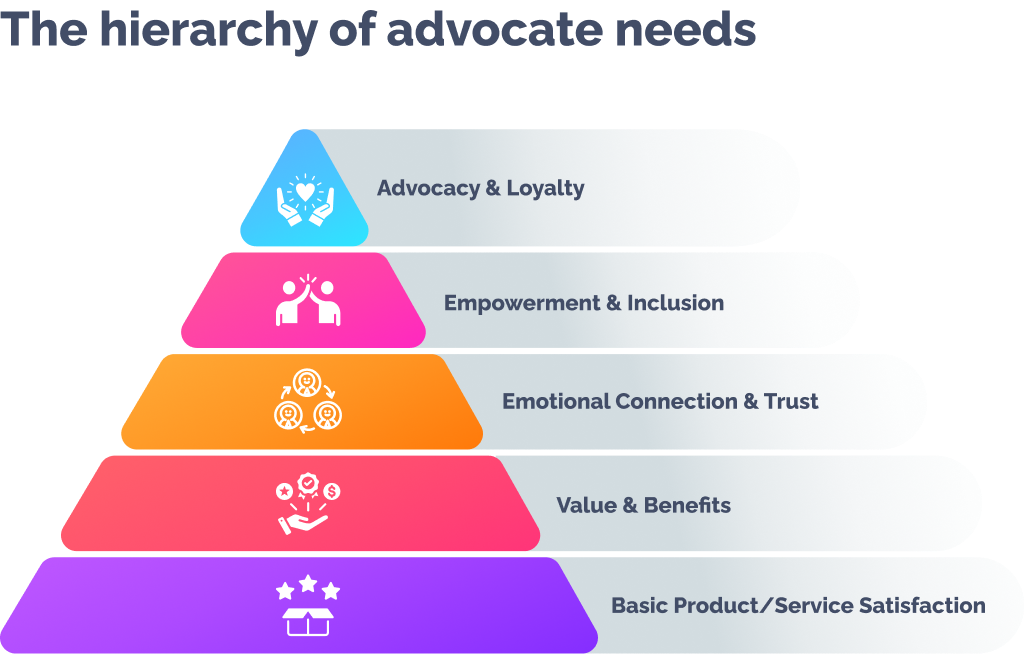Understanding Customer Advocacy
Customer advocacy is the pinnacle of customer relationship management. It’s when customers are so delighted with your brand that they become active promoters. Unlike basic satisfaction, advocacy is deeply rooted in emotional and psychological connections customers form with a brand. A key driver here is the overall customer experience – from the initial contact to post-purchase support.
The Journey to Customer Advocacy
Building Trust with Transparency and Integrity
Trust is the cornerstone of advocacy. Brands that communicate transparently and uphold integrity win customer trust. For instance, Patagonia’s commitment to environmental issues and transparent supply chains has fostered deep trust and advocacy among its customers.
Delivering Exceptional Customer Service
Exceptional service can turn customers into advocates. This means not just meeting but exceeding customer expectations. Zappos, known for its outstanding customer service, often surprises customers with upgrades and swift problem resolutions, turning them into loyal advocates.
The Hierarchy of Customer Advocate Needs
The Hierarchy of Customer Advocate Needs is a concept modeled after Maslow’s Hierarchy of Needs, applied to understanding and cultivating customer advocacy. It outlines various levels of customer needs and experiences that businesses must address to transform customers into advocates. The hierarchy typically includes the following levels:
- Basic Product/Service Satisfaction: At the base, customers expect the product or service to meet their basic needs effectively.
- Reliability and Consistency: Customers seek reliability in products/services and consistent experiences.
- Value and Benefits: Beyond basic satisfaction, customers look for additional value, benefits, and positive experiences that set a brand apart.
- Emotional Connection and Trust: Building an emotional bond and trust with the brand, leading to a deeper relationship.
- Empowerment and Inclusion: Customers feel empowered when their feedback and opinions are valued and included in shaping products or services.
- Advocacy and Loyalty: At the top of the hierarchy, satisfied and emotionally connected customers become brand advocates, actively promoting the brand through word of mouth and other means.
Leveraging Personalization and Customer Engagement
Personalization is key to engaging customers. Tailored experiences make customers feel valued, deepening their connection with the brand. Engaging customers through personalized emails, social media interaction, and community involvement can significantly boost advocacy.
Personalization significantly enhances customer engagement in various ways.
Tailored Recommendations: Just like Netflix and Amazon, using customer data to provide personalized recommendations can greatly increase engagement. These platforms analyze past behavior to suggest products or content that align with individual preferences, leading to longer browsing sessions and increased likelihood of purchases or content consumption.
Customized Email Marketing: Businesses like MailChimp use personalization in email marketing, sending content that aligns with the customer’s interests, past purchases, or behaviors. This results in higher open and click-through rates, as the content feels more relevant to each recipient.
Personalized Discounts and Offers: Companies like Starbucks use personalized loyalty programs where offers and discounts are tailored based on the customer’s purchase history. This not only incentivizes repeat purchases but also makes customers feel valued, enhancing their engagement with the brand.
Harnessing the Power of Customer Feedback
Listening to and acting on customer feedback demonstrates that you value their opinions, encouraging advocacy.
There are several effective ways to collect customer feedback:
Surveys and Questionnaires: Deploying online surveys or questionnaires through email, social media, or on your website. Tools like SurveyMonkey or Google Forms are commonly used for this purpose.
Feedback Forms on Website: Incorporating feedback forms directly on your website, especially on product or service pages, allows customers to easily share their thoughts.
Social Media Monitoring: Utilizing social media platforms to listen to customer opinions and feedback. Tools like Hootsuite or Sprout Social can help in monitoring brand mentions and customer sentiments.
Focus Groups: Organizing focus group discussions where a select group of customers can provide in-depth feedback on specific products or services.
Customer Interviews: Conducting one-on-one interviews, either in person or virtually, can provide detailed insights and a deeper understanding of customer opinions and experiences.
Measuring the Success of Customer Advocacy Efforts
Measuring the success of customer advocacy efforts effectively involves several key metrics and approaches:
Net Promoter Score (NPS): Measures the likelihood of customers recommending your brand to others. A high NPS indicates strong customer advocacy.
Customer Satisfaction Score (CSAT): Assesses how satisfied customers are with your products or services. High satisfaction often correlates with increased advocacy.
Customer Lifetime Value (CLV): Tracks the total value a customer contributes over their relationship with the brand. An increase in CLV can indicate successful advocacy efforts.
Social Media Engagement: Monitoring likes, shares, comments, and mentions on social media provides insights into how customers are advocating for your brand online.
Referral Rates: Tracking the number of new customers acquired through referrals helps measure the direct impact of advocacy.
Customer Retention Rate: High retention rates can be a sign of strong customer advocacy, as loyal customers are more likely to advocate for the brand.
Customer Feedback and Testimonials: Qualitative feedback from customers can provide direct insights into their advocacy and the reasons behind it.
Building customer advocacy is a strategic process that requires consistent effort and a deep understanding of customer needs and preferences. The rewards, however, are substantial – from increased loyalty to organic business growth. By focusing on trust, personalization, and feedback, businesses can transform their customers into their most valuable advocates..

